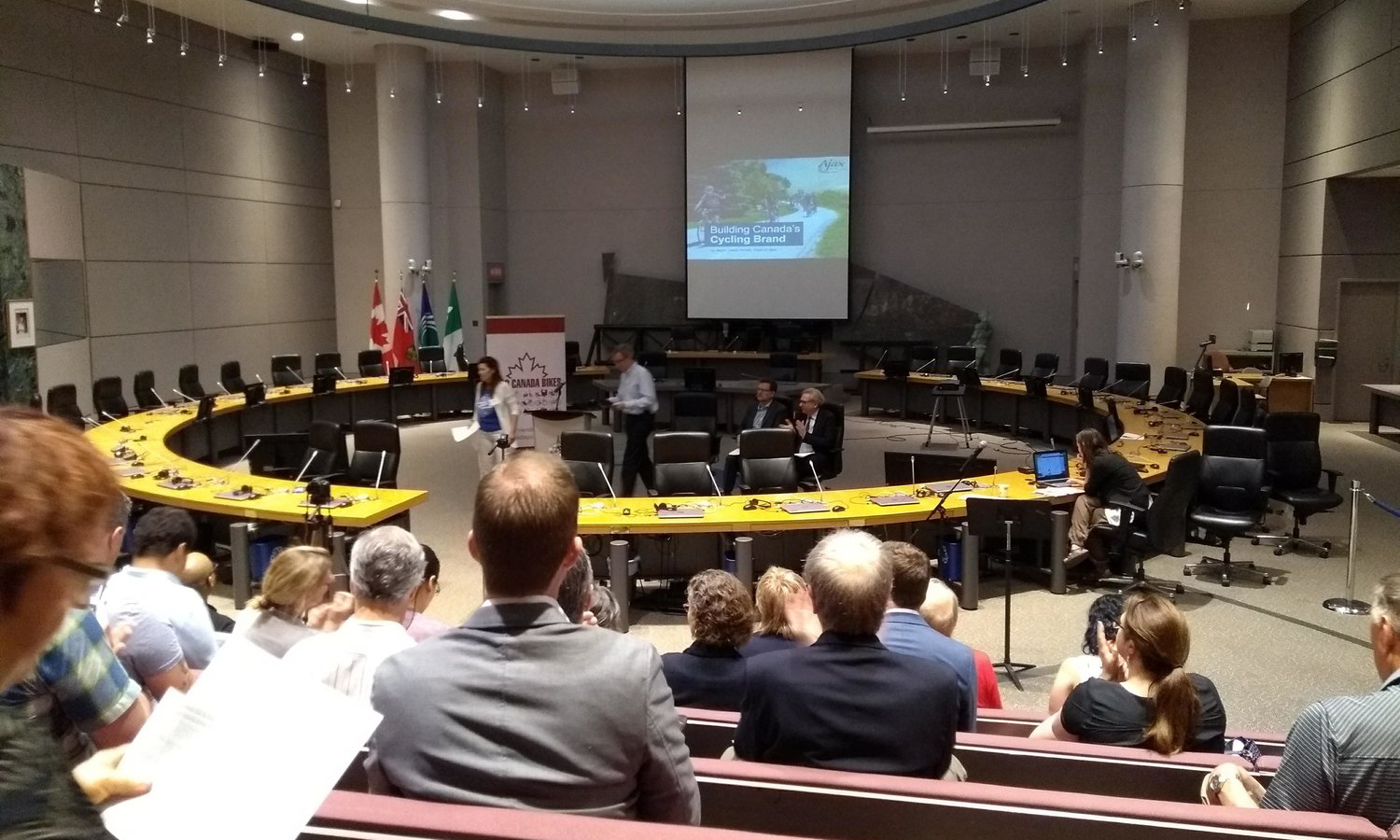Notes from the 2nd National Bike Summit
The spring/summer season is a very busy one, especially for bikes. The 2nd Canadian National Bike Summit in Ottawa in the last week of May was immediately followed by Bike to School Week, London Bicycle Festival and London Celebrates Cycling. And there are a bunch of other events lined up for this year, but I’ll take advantage of this little break to do a quick recap of the 2CNBS. As hard as I tried to be succinct, there was too much going on, so I'll break it down into a couple of parts.
The event lasted “only” two days and it was jam-packed with panels and lectures. There were more than 35 speakers on the first day alone. After the welcoming remarks, the keynote speaker, Lars Strömgren, started the day stating that instead of promoting cycling, we should be thinking about how to make cycling the easiest and most convenient choice.
"Sometimes we are trying so hard to create ideal cities that we forget to make cities slightly better.”
He went on to describe the three main elements in his strategy using some very interesting symbolism: the whale (describing the narrative to create a strong support base); the garbage can (pool of valuable resources and skills that are sometimes overlooked); and the red scarf (let others take the stage but ensure they deliver your message). Finally, he presented the #MovingBeyondZero concept.
Lars set the tone for a theme that would appear again and again throughout the Summit. The power of storytelling. I don't believe this was meant to be intentional which makes it an even more powerful message coming spontaneously from people from many different walks of life.
The second panel brought some encouraging perspectives from politicians, affirming that cycling has a great future in Canada. Steve Parish is witnessing the transformative impact in his community of Ajax, ON, and the potential for Canada to be a cycling mecca. Ottawa councillor David Chernushenko, in a very lucid presentation, talked about how we moved past the "if" to the "how" moment, regarding cycling promotion. But in order to get there, we need more long-term planning, not ad hoc implementation - a clear vision of what we want our cities to look like in the future. That means, for example, if we say we want to increase cycling significantly but we are expanding roads and highways, we won't get there. We need to "get back the space to people".
The following panel presented some of the economic benefits of cycling with a focus on cycling tourism. Although a very important aspect, it could explore more of the impacts in daily urban matters. For a more comprehensive view of economic benefits I recommend the book Bikenomics by Elly Blue.
Fun fact, Dr. Arne Elias referred to our National Cycling Strategy as a Squeaky Wheel Bicycle.
The last panel in the morning brought some unusual perspectives about winter cycling, long-distance commuting and bike logistics. This last aspect of urban transportation is easily forgotten in discussions about active transportation. To learn more about the impact of Bike Logistics in a big city, I recommend looking at the research that won the Cycling Visionary Award in Vienna, five years ago. The Case Study is in Rio de Janeiro, host city of one the biggest cycling conferences this year (Velo-City 2018). The video below is in Portuguese but has English subtitles.
Next week, we will see a few more snippets of the 2CNBS in Ottawa.

